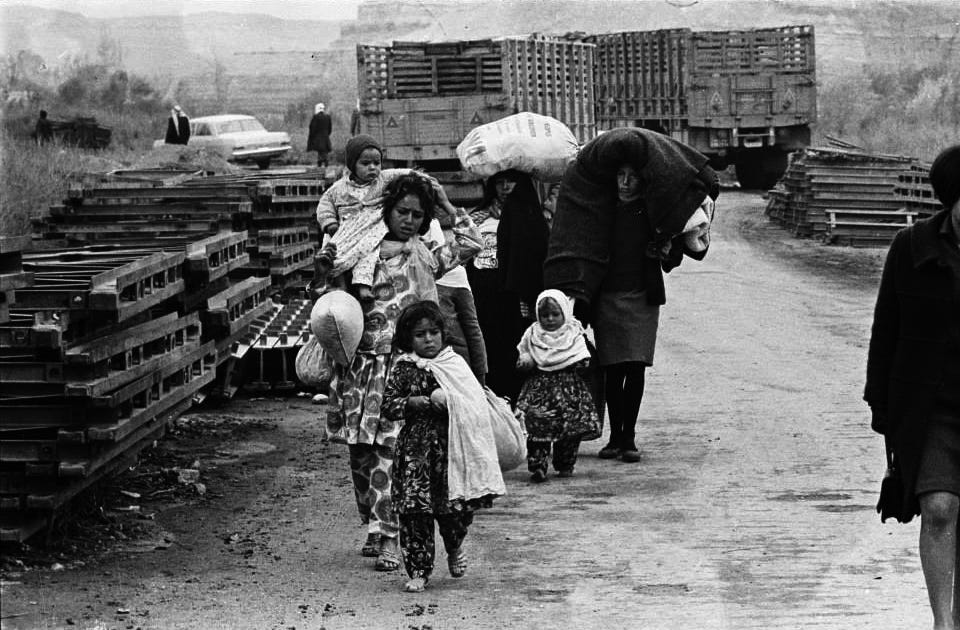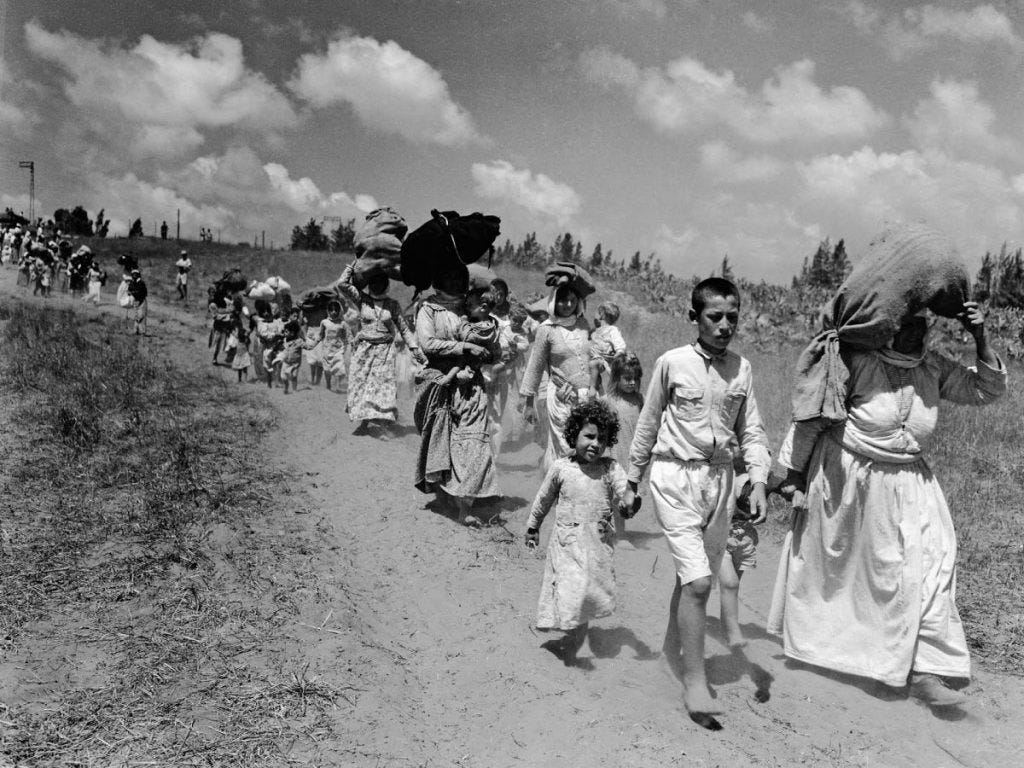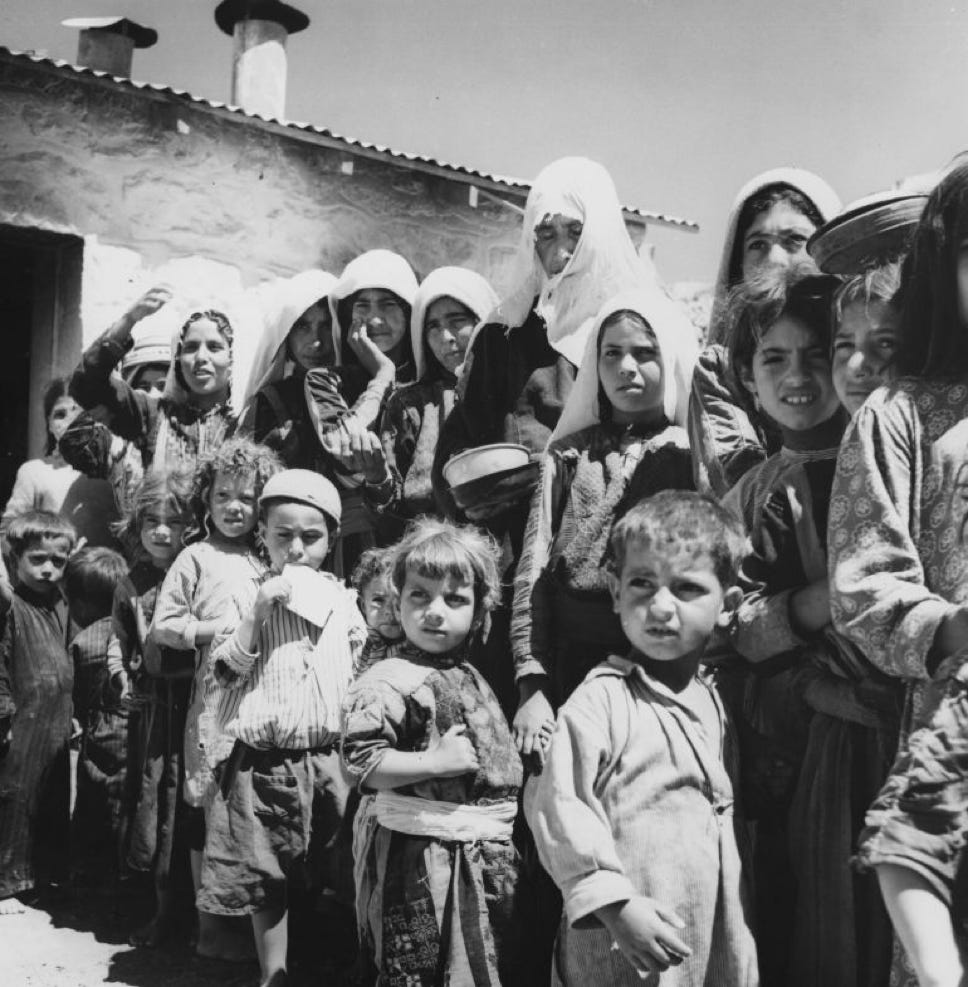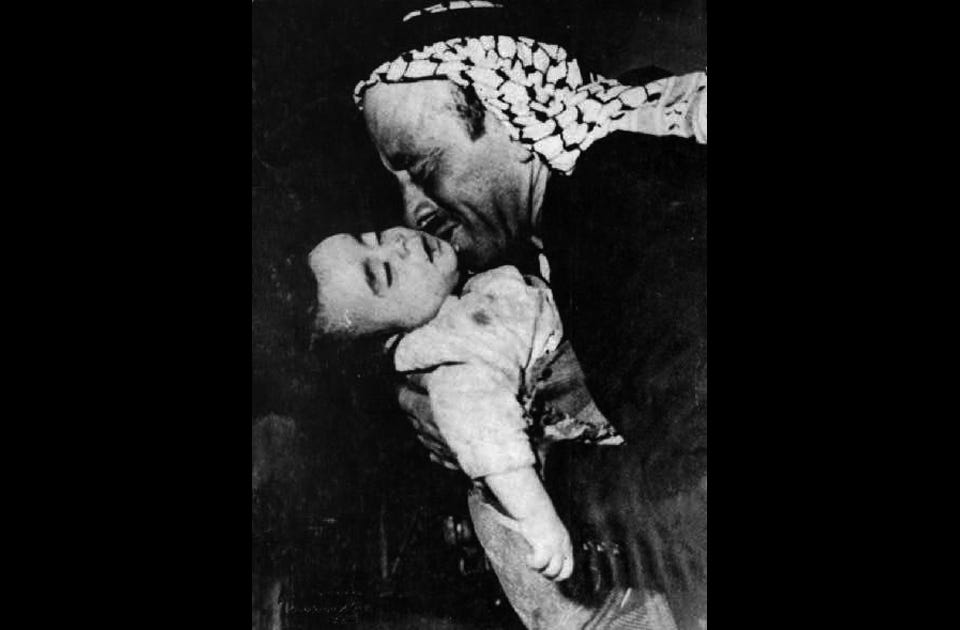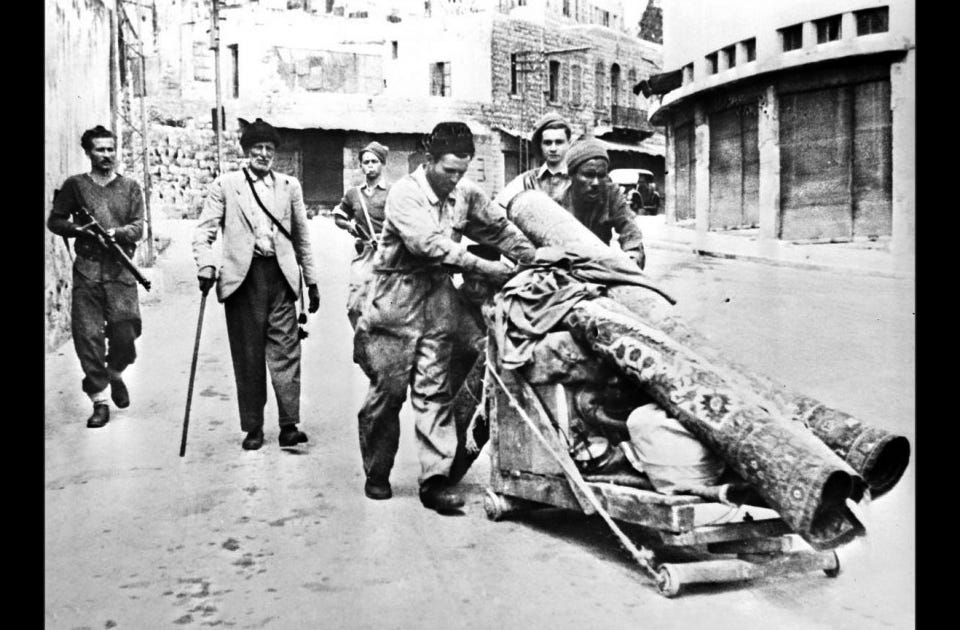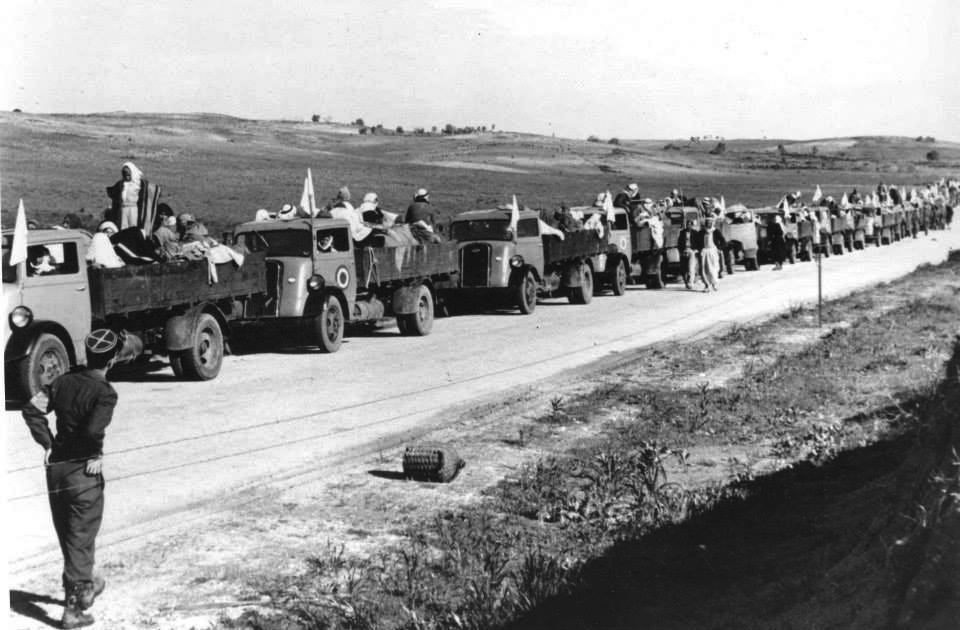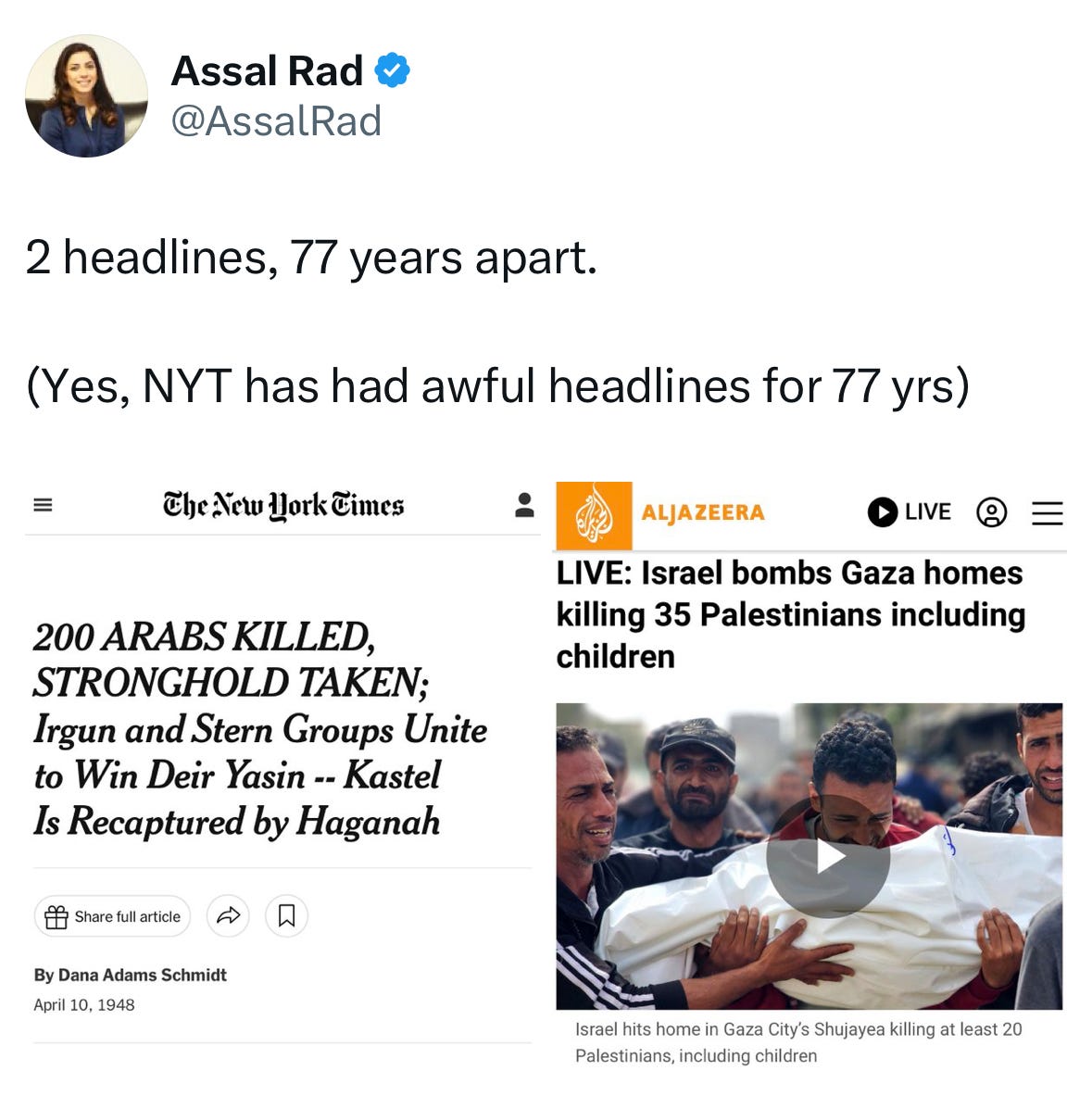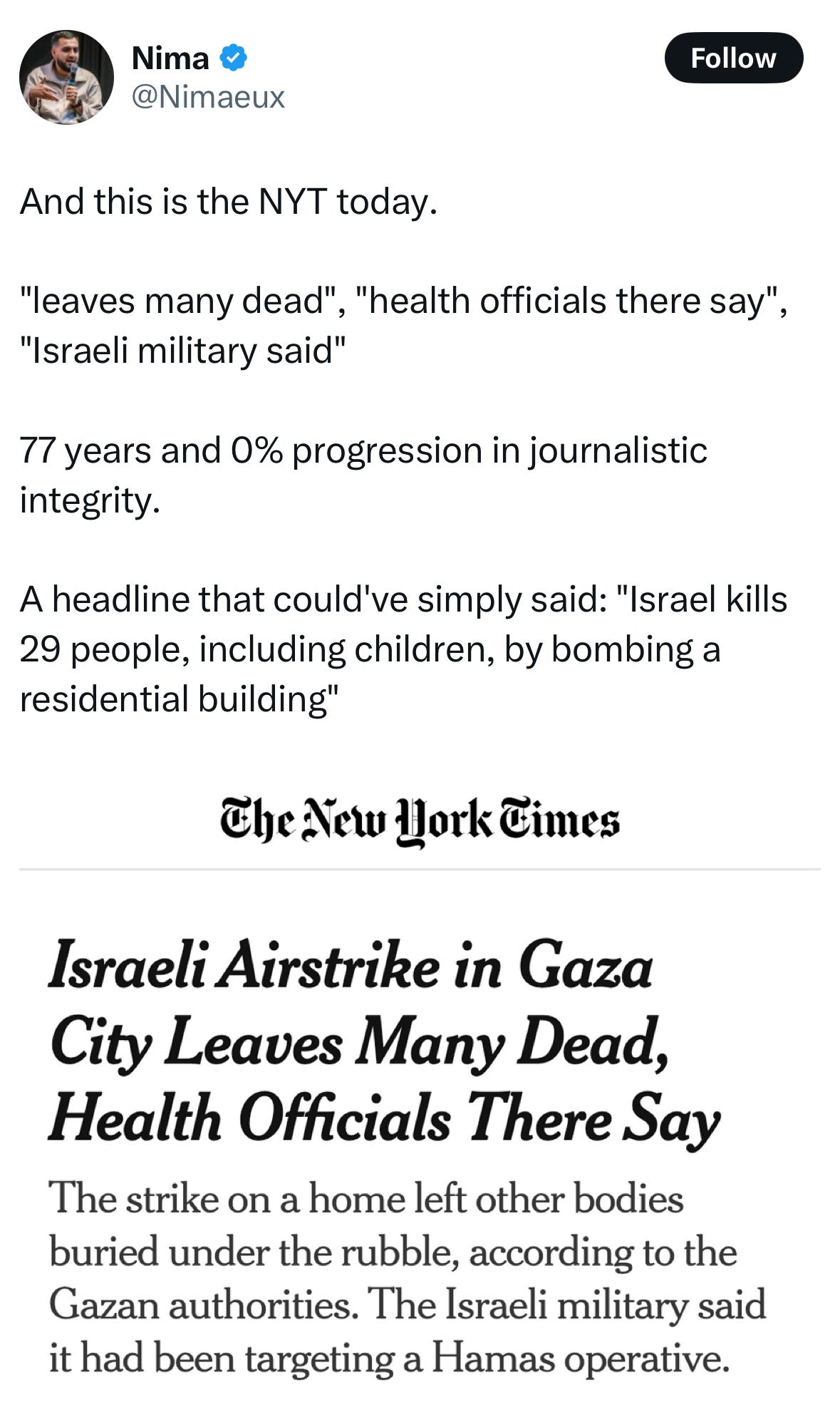Remembering the Deir Yassin Massacre
77 years ago—before the state of Israel—Zionist gangs carried out a massacre in the Palestinian village of Deir Yassin, a key event of the Nakba.
From Friendly Neighborhood Comrade:
On April 9, 1948, 77 years ago, members of the fascist paramilitary Irgun and Stern Gang attacked the village of Deir Yassin killing at least 107 Palestinians. Many of the people killed—from those who were tied to trees and burned to death to those lined up against a wall and killed by Irgun and Stern gang members with submachine guns—were women, children and the elderly.
It was a Friday afternoon when the Irgun and Stern Gang attacked the village Deir Yassin, which was home to an estimated 750 residents.
Most were quarry workers/stone cutters.
According to a 1948 report filed by the British delegation to the UN, the "killing of some 250 Arab men, women, and children took place in circumstances of great savagery."
"Women and children were stripped, lined up, photographed, and then slaughtered by automatic firing, and survivors have told of even more incredible bestialities," the report said. "Those who were taken prisoners were treated with degrading brutality..."
Deir Yassin was no mistake, according to Illan Pappé.
"Depopulating Palestine was not a consequential war event but a carefully planned strategy otherwise known as Plan Dalet, which was authorized by Ben Gurion in March 1948," Pappé wrote.
Today, a psychiatric hospital stands on the remains of some village houses. What used to be the city centre is now a bus station. In 1949, the settlement "Givat Shaul Bet" was established on the ruins of Deir Yassin as an extension of the earlier settlement built in 1906.
In the early 1980s, the usurpation of the village lands continued when the "Haf Nof" settlement was established. Deir Yassin was not the only Palestinian town where massacres took place. Other towns include: Balad Al-Sheikh, Saasaa, and Saliha to name but a few.
77 years ago, fascist paramilitaries like Irgun and Stern Gang tore through Palestinian villages, killing the villagers and expelling those who remained alive, to clear the way for the creation of the entity.
An estimated 15,000 Palestinians were killed and hundreds of thousands fled their homes to live as refugees in other parts of occupied Palestine or neighboring countries, an event known by Palestinians as the Nakba—"the catastrophe."
Deir Yassin has become emblematic of the suffering the entity has inflicted on the Palestinians for 77 years.
From the Institute for Middle East Understanding: The Deir Yassin Massacre Explainer
Yesterday marks 77 years since the massacre of Deir Yassin, an atrocity that came to define the Nakba, the ethnic cleansing of Palestine in 1948 to establish the state of Israel on stolen Palestinian land.
During the Deir Yassin massacre, militias that would soon become the Israeli military rounded up men, women, and children before executing them. By the end of the massacre, the militias had killed or forced out the town’s entire population. During the Nakba, Israel forced more than 75% of the Palestinian population from their homes and land.
In the 77 years since, Israel has kept the horrors of the Nakba alive through relentless violence, ethnic cleansing, and the theft of Palestinian land. Nowhere is this more clear than in Israel’s genocide in Gaza today.
Palestinians have endured more than 77 years of Israel’s horrific violence. They deserve to be free.
What was the Deir Yassin massacre?
The Deir Yassin massacre was a massacre of more than 100 Palestinians, including dozens of children, women, and elderly people, carried out by Zionist militias in the Palestinian town of Deir Yassin near Jerusalem on April 9, 1948, during the establishment of the state of Israel. Some of the victims were mutilated and raped before being murdered. Entire families were killed. Dozens of men were paraded through Jerusalem on trucks and then executed in a nearby quarry.
The massacre was committed by members of the Irgun and Stern Gang, led by Menachem Begin and Yitzhak Shamir, respectively, who would both go on to become prime minister of Israel. The precursor to the Israeli army, the Haganah militia, provided support to the attack on Deir Yassin with mortar fire and by disposing of the bodies. The Haganah was under the control of David Ben-Gurion, who would become Israel’s first prime minister just over a month after the massacre.
Why is it important?
The Deir Yassin massacre triggered a mass flight of Palestinians from their homes and land in and around Jerusalem and beyond. It was a pivotal moment in the ethnic cleansing of Palestinians that was carried out by Zionist militias and the new Israeli army in order to establish Israel as a Jewish majority state in Palestine.
The Deir Yassin massacre and flood of Palestinians fleeing in terror across their borders helped convince the leaders of neighboring Arab countries, who were initially reluctant to intervene, to get involved militarily when the state of Israel was declared on May 15, 1948, thus marking the start of a series of regional wars over the ensuing decades.
In the end, approximately three quarters of all Palestinians (upwards of 750,000 people) were expelled from their homeland during Israel’s establishment on 78% of Palestine. This event is known to Palestinians as the Nakba (“catastrophe” in Arabic).
Why does it matter today?
The massacre at Deir Yassin and its repercussions form a major part of the collective memory of Palestinians and of the collective trauma suffered by generations of Palestinians dispossessed and brutalized by Israel’s apartheid system. It represents the violence, sudden loss of their homes and homeland, and Israel’s near total destruction of Palestinian society during the Nakba, a situation which endures today with Israel continuing to systematically oppress Palestinians and force them out of their homes and off their land. This is known as the Ongoing Nakba.
The plight of Palestinians expelled from their homes during and after Israel’s establishment and Israel’s denial of their right to return to their homeland is one of the core problems in Palestine/Israel. Most live as stateless refugees in impoverished semi-permanent camps under Israeli military rule in the remaining 22% of Palestine occupied by the Israeli army in the 1967 war (the West Bank, East Jerusalem, and Gaza), or in neighboring countries.
Israel’s failure to hold anyone accountable for what happened in Deir Yassin and the several dozen other massacres committed by Zionist militias and the Israeli army during Israel’s establishment set the tone of virtual impunity that Israelis who commit crimes against Palestinians have enjoyed ever since. This lack of accountability and sense of impunity helps to fuel the brutal violence frequently inflicted by Israeli soldiers and settlers on Palestinians today.
Many Israelis, including senior political and religious leaders, believe the ethnic cleansing carried out during the Nakba didn’t go far enough and openly call for further expulsions of Palestinians and the destruction of Palestinian communities. These threats and incitement fuel the fears of Palestinians rooted in the memory of the mass expulsions of 1948 and the knowledge that it could happen again.
In March 2023, after a Palestinian man was shot and killed by an Israeli soldier or settler and settlers torched hundreds of Palestinian homes and cars during a violent rampage in the town of Huwara in the West Bank, Bezalel Smotrich, Israel’s finance minister and a key member of the government told an interviewer: “I think the village of Huwara needs to be wiped out. I think the State of Israel should do it.” In 2021, Smotrich said that Israel’s first prime minister made a mistake by not expelling all Palestinians during the Nakba, telling Palestinian members of Israel’s parliament: “You’re here by mistake, it’s a mistake that Ben-Gurion didn’t finish the job and didn’t throw you out in 1948.”
Go deeper
Quick Facts: The Palestinian Nakba (Catastrophe)
Quick Facts: Palestinian Refugees
Timeline: The Palestinian Nakba & Establishment of Israeli Apartheid
Fact Sheet: Is Israel An Apartheid State?
Testimonies From the Censored Deir Yassin Massacre: 'They Piled Bodies and Burned Them' (Haaretz newspaper)
Classified Docs Reveal Massacres of Palestinians in '48 – and What Israeli Leaders Knew (Haaretz newspaper)
From the Interactive Encyclopedia of the Palestine Question: The Deir Yassin Massacre of April 1948, An Ominous Sign of Worse to Come
The Deir Yasin Massacre was not the first by Zionist forces in Palestine, nor was it the last. However, the military and political developments that preceded and followed it made it a turning point in the 1948 War and a symbol for Zionist plans to uproot and forcibly evict Palestinians from their towns and villages.
Deir Yasin lies on the eastern slope of an 800-meter-high hill. It faced the Jewish suburbs of West Jerusalem , which at the time included six settlements, the closest of which was Givat Shaul . These colonies formed a formidable barrier between Deir Yasin and Jerusalem . The village's only link to the outside world was a single dirt road north of the valley that ran through Givat Shaul and then to Jerusalem. A terraced valley with almond, fig, and olive trees and grape orchards separated the village from the colonies. The nearest Arab villages were Lifta and Ayn Karem . In 1948, Deir Yasin occupied an area of 2,700 dunams, over half of which was farmland; an estimated 750 residents lived in 144 houses.
The assault on Deir Yasin was preceded by political and military developments that strongly influenced the course of events. After the Partition Plan for Palestine was passed in November 1947, war broke out. Within the Zionist Movement , there was a military rivalry between the Haganah on the one hand and the Irgun (Etzel) and LEHI-Stern Gang on the other. The Haganah, led by David Ben-Gurion , represented the workers' faction while the latter two represented the rightist trend that was inspired by the teachings of Ze'ev (Vladimir) Jabotinsky , with Menachem Begin as its most prominent leader. This rivalry was expressed through acts of terrorism against Palestinians, the deadliest of which took place in Jerusalem and its neighboring countryside; Jerusalem was important for symbolic, religious, political, historical, and strategic reasons.
In the first two weeks of April 1948, the balance of power between the Zionists and the Palestinians shifted dramatically; on 4 April the Zionist leadership set into motion Plan Dalet , whose goal was to occupy and ethnically cleanse the area allocated by the Partition Plan to the proposed Jewish state, in addition to whatever territory could be captured from the land allocated to the Arab state, especially the city of Jerusalem and its surrounding area.
The decision to attack Deir Yasin was taken after the Haganah forces occupied the strategically located village of al-Qastal . Yitzhak Levi , the head of Haganah intelligence in Jerusalem at the time, said that Deir Yasin was chosen because the Irgun and Stern militias had relatively few resources and could not launch an operation on as large a scale as those of the Haganah. In addition to needing credit for some operations to avoid being marginalized in Jewish public opinion, they had other goals: to take revenge for the battles of Kfar Etzion and Atarot , to pillage and plunder (Deir Yasin was one of the wealthier Arab villages), and to find an outlet for the racist hatred built up inside them.
According to the attack plan adopted by the leaderships of the Irgun and Stern Gang, their militias would mobilize simultaneously at four strategic points: one group would advance from Givat Shaul and another would advance from the east into the village center, led by an armored vehicle with a loudspeaker attached to it. A third would start from the Beit HaKerem settlement to attack the village from the southeast, at the Shaykh Yasin mosque, while a fourth would also come from Beit HaKerem and outflank the village by attacking from the west. The two groups would send 200 of their toughest fighters, seventy of whom would be kept in reserve. The leaders discussed how they would treat women, children, the elderly, and prisoners. The majority decided that all the men and anyone assisting them would be liquidated. The operation date was set for Friday, 9 April, at 5:15 a.m. The correspondence and recorded conversations between the leaders of the Irgun and Stern and Haganah commanders show that the Haganah approved the attack on Deir Yasin and that the fate of the village was thus sealed sooner or later.
In the weeks before the massacre, the residents of Deir Yasin were extremely fearful and apprehensive. Despite the nonaggression pact that the village elders had struck with the Givat Shaul settlement in January 1948, the villagers sensed that the situation was not safe, especially after the capture of al-Qastal, in whose battle many of Deir Yasin's villagers fought and Abd al-Qadir al-Husseini was martyred. The men were on high alert, guarding the village in shifts and armed only with old rifles.
When the assault began at dawn, the villagers fought heroically until their ammunition was exhausted. Zionist sources mention that the attackers faced fierce resistance and sustained many casualties, which made them call for reinforcements from the Haganah to be able to continue their assault, but it was always an unequal battle. When the two groups (with the help of the Haganah) were able to enter Deir Yasin, its members began massacring the villagers. Using brutal methods (including blowing up houses with their residents trapped still alive inside them), they killed indiscriminately—men, women, children, the elderly—and openly desecrated their bodies. The terrorist attackers sacked the village, looting everything they could get their hands on. Then, they loaded 150 of the villagers they took as prisoners (they referred to them as “enemy combatants”) onto trucks and paraded them in a victory procession in Jewish neighborhoods before dumping them on the outskirts of the Arab neighborhoods so that they could tell people what happened to them in Deir Yasin. Accounts of the massacre are replete with survivor testimony about the savagery of the killers; many witnessed entire families get killed and gave the names of the killed.
Meir Pa'il , one of the Palmach 's intelligence officers at the time who was charged by the Haganah leadership with monitoring the operation and preparing a report on it, says that the massacre carried out by the Irgun and Stern was indiscriminate and that no one was spared. He reported the victory procession that went around Jerusalem displaying the captured, after which twenty-five of the men were unloaded from the trucks and shot in cold blood.
Jacques de Reynier , head of the International Committee of the Red Cross delegation in Jerusalem, is considered the most prominent eyewitness to the Deir Yasin massacre, since he was the only foreigner who was able to enter the village and document what he witnessed. After he received an official Arab request to travel to Deir Yasin, he was advised by the Jewish Agency and the Haganah leadership to stay out of the matter; they refused to guarantee his safety should he decide to visit the village. However, he remained determined and managed to enter the village on 11 April. He describes what he saw there:
“all the militia members, men and women, were young people, some of them teenagers. They were all heavily armed, with revolvers, machine guns, hand grenades and long knives. Most of the knives [I saw] were smeared with blood. Clearly this was an extermination squad to finish off the wounded who were still alive, and it was carrying out its task impeccably.”
Reynier speaks of the piles of corpses outside and inside homes; he was able to rescue only three individuals who were still alive. Later, Arab officials asked him to bury the dead at an identifiable location in a befitting manner.
After carrying out the massacre the two terrorist groups convened a press conference exclusively for the American print and radio media, where they bragged about the military victory and occupation of Deir Yasin and the massacre of its inhabitants. They also boasted of the participation of the Palmach in the assault, which was a source of great embarrassment for the Jewish Agency. They falsely claimed that they had killed 245 Arabs, a number that was repeated in media accounts; historical sources estimate the number at around 100, with women, children under age 15, and old men making up 75 percent of the total killed. Clearly, the Zionist forces exaggerated the number of victims and deliberately publicized the horrifying details of the massacre with the aim of provoking panic among Palestinians, which would push many of them to leave out of fear of meeting a similar fate.
Deir Yasin had been abandoned to fight its battle on its own; a contingent of the Arab Liberation Army in the nearby village of Ayn Karem, did not intervene, claiming it had not received any orders. The British issued an official communiqué to announce that the UK government had decided to carry out an airstrike on the Jews who occupied Deir Yasin but that it desisted after discovering that the assailants had already left the village.
Palestinians tried to mobilize public opinion around the world through the press and whatever platforms they could use to spread the news of the massacre as widely as possible. But their efforts ended up having the opposite result: instead of influencing the international community to act, it ended up having a negative impact on the morale of Palestinians in other areas. This was not the outcome Dr. Hussein Fakhri al-Khalidi , general secretary of the Arab Higher Committee (Hay'a) in Jerusalem, had in mind when he broadcast a statement about the massacre with the aim of exposing and denouncing the Zionists and appealing to the Arabs' sense of honor and pride. However, the massacre did remove King Faruq 's hesitancy when, on 12 April, he informed Arab leaders that Egypt would join the Arab armies in defending Palestine with the expected British evacuation of the country on 15 May.
By the end of 1948, more than 400 villages had been depopulated; some were erased completely. As for Deir Yasin, homes that remained intact were later converted by the Israeli government into a hospital for the mentally ill, surrounded by a fence, with entry restricted only to those with special permission.
From Spring Magazine: The Legacy of the Deir Yassin Massacre
From Al Jazeera: The Deir Yassin Massacre: Why It Still Matters 75 Years Later





